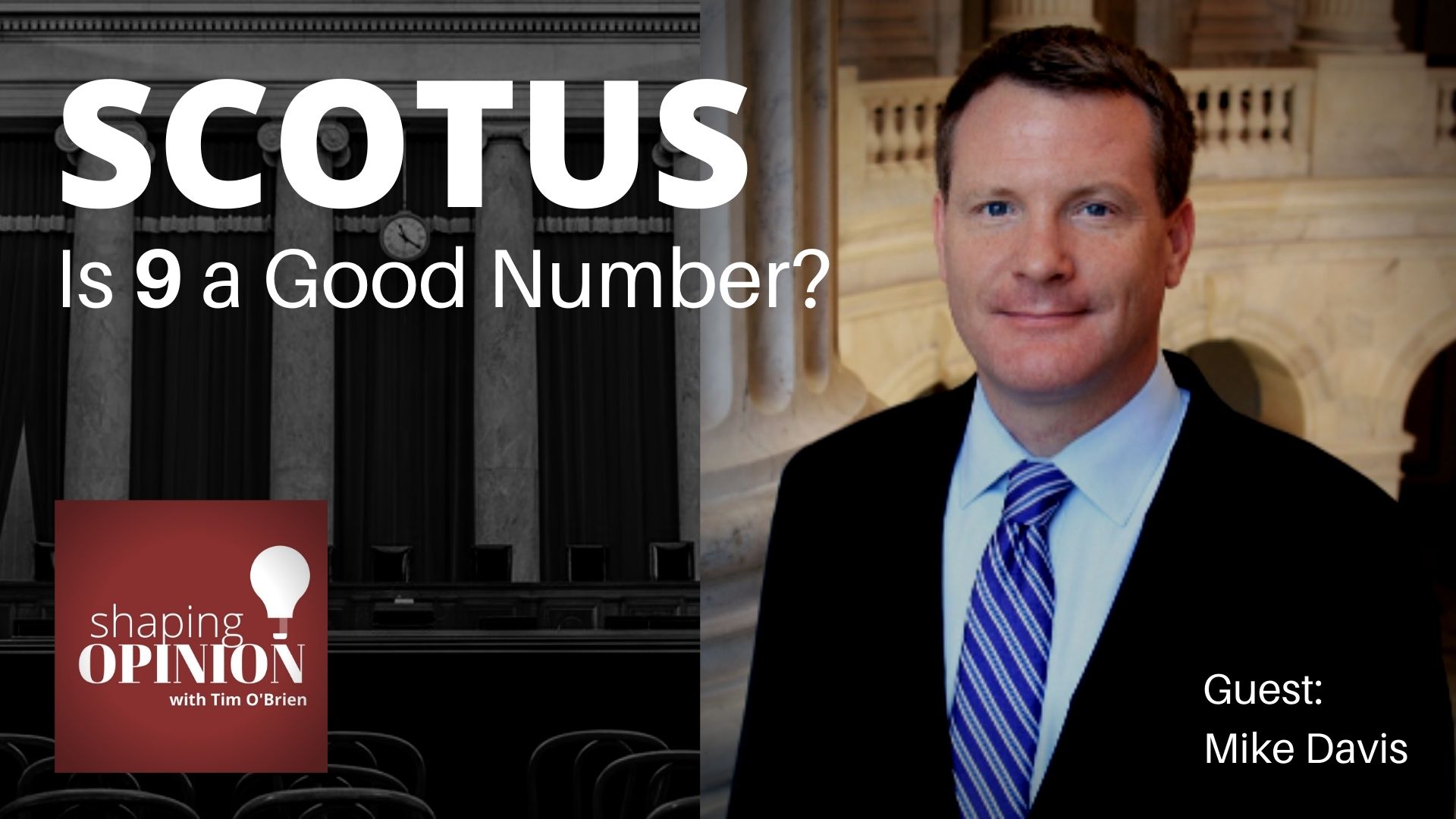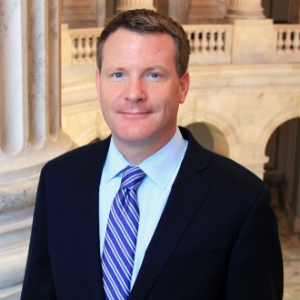Mike Davis joins Tim to talk about the current debate over whether or not to expand the size of the U.S. Supreme Court, otherwise known as “court packing.” Mike is president of the Article 3 Project. That’s an organization that focuses on the U.S. Constitution and the judicial branch of government. Mike explains how important it is to preserve the apolitical nature of the judicial branch of government, and the U.S. Supreme Court, in particular.

The U.S. Supreme Court is as old as the country itself. The Court was established by the United States Constitution with the passage of the Judiciary Act of 1789. It first assembled in 1790.
The U.S. Supreme Court is the highest court in the court system, representing the judiciary branch of the nation.
The judiciary is one of three branches of government. The other two are the executive branch, headed by the president, and the legislative branch, which represents both the House of Representatives and the Senate.
When the Supreme Court was established back in 1789, it had six Justices.
Since then, the number of justices on the court has changed a few times. John Adams, when he was president, passed the Judiciary Act of 1801, which reduced the Court to five justices. This was an attempt to limit how many appointments the next president – Thomas Jefferson – could appoint to the bench.
Once Jefferson got into office, he and his party repealed the act and went back to having six justices on the high court. Then, in 1807, Jefferson and Congress decided to add a seventh justice when it added a seventh federal circuit.
Andrew Jackson was the next president to change the number of justices on the Supreme Court. In 1837, he added two more justices to the high court after Congress expanded the number of federal circuit court districts.
The next time there was a change to that number was for a short time during the Civil War. In 1863, Congress created a 10th federal circuit, and so the country had a 10th Supreme Court Justice.
Once the war was over, Congress passed legislation in 1866 to reduce the Court to seven justices. That lasted for two years. In 1869, a new Judiciary Act established the number of nine justices on the U.S. Supreme Court.
That was the last time there was a change to the number of justices on the Supreme Court. 1869.
The last time there was any serious consideration to changing the number was a failed attempt by President Franklin Roosevelt in 1937. His motives were political. He wanted a majority of Democrat-leaning justices to help advance his agenda. So, his idea was to add as many as six new members to the Supreme Court.
The effort failed when two respected members of the Court at that time, decided to oppose the effort – Chief Justice Charles Evans Hughes and Justice Louis Brandeis.
Mike Davis has spent much of his career focused on the justice system, and the U.S. Constitution. He’s had a special focus on the judiciary and the Supreme Court.
Links
- The Article 3 Project, website
- Internet Accountability Project, website
- Court-packing Isn’t Just a Bad Idea, It’s Downright Unconstitutional, New York Post
- Mike Davis: Packing the Court is a Radical Assault on Judicial Independence, The Epoch Times
- Democrats Introducing Legislation to Pack Supreme Court with 4 New Justices, Report Says, DailyWire
About this Episode’s Guest Mike Davis
 Mike Davis leads the Article III Project (A3P), established to fight for and defend judicial nominees, appointed judges, the process, and judicial independence.
Mike Davis leads the Article III Project (A3P), established to fight for and defend judicial nominees, appointed judges, the process, and judicial independence.
He is also the founder and president of the Internet Accountability Project, a new advocacy organization that opposes Big Tech and seeks to hold them accountable for their bad acts.
Davis previously served as Chief Counsel for Nominations to Chairman Chuck Grassley (R-IA) on the United States Senate Committee on the Judiciary during the 115th Congress (2017-19). Davis led a team of attorneys, law clerks, and other professionals that advised Chairman Grassley and other senators on presidential nominations and Senate confirmations of federal judges, senior Justice Department officials, and other senior Executive Branch appointees. Davis served as the Chairman’s staff lead for 30 hearings, 41 markup meetings, or floor votes for 278 nominees, including the confirmations of Justice Brett Kavanaugh and a record number of circuit judges confirmed during a president’s first year and a president’s first two years in office. Davis also served as the Chairman’s staff lead for the hearings for 50 judicial nominees, including 6 circuit nominees, readied for confirmation votes in 2019.
Before joining Chairman Grassley’s team on the Senate Judiciary Committee, Davis, a former law clerk to Justice Neil Gorsuch, served as the “general” of Justice Gorsuch’s outside support team for his successful confirmation to the Supreme Court of the United States in 2017.
Davis has served in all three branches of the federal government, including for President George W. Bush, House Speaker Newt Gingrich, and Supreme Court Justice Neil Gorsuch. Davis has also served in several capacities in the Justice Department, including as a federal prosecutor. Davis has assisted with hundreds of appointments to every part of the federal government, including Supreme Court justices, district and circuit judges, cabinet secretaries, ambassadors, heads of independent agencies, and sub-cabinet officials, along with members of boards, commissions, and delegations.
For nearly ten years before returning to public service in 2017, Davis was a civil litigator in Denver. Davis worked at one of the largest law firms in the world and one of the top-ranked law firms in Colorado, before starting and running his own law practice for over five years. Super Lawyers recognized Davis as a “Colorado Super Lawyer” in 2014, 2015, 2016, and 2017, along with a “Colorado Rising Star” in 2010, 2012, and 2013. In 2013, Colorado Business Magazine recognized Davis as a “Top 25 Most Influential Young Professionals in Colorado.” Davis is from Des Moines, Iowa. He received his Bachelor of Arts in 2000 and Juris Doctor in 2004, both from the University of Iowa. In 2017, Davis received Iowa Law’s “Emerging Leader Award.” Davis also serves on the University of Iowa Political Science Advisory Board.




